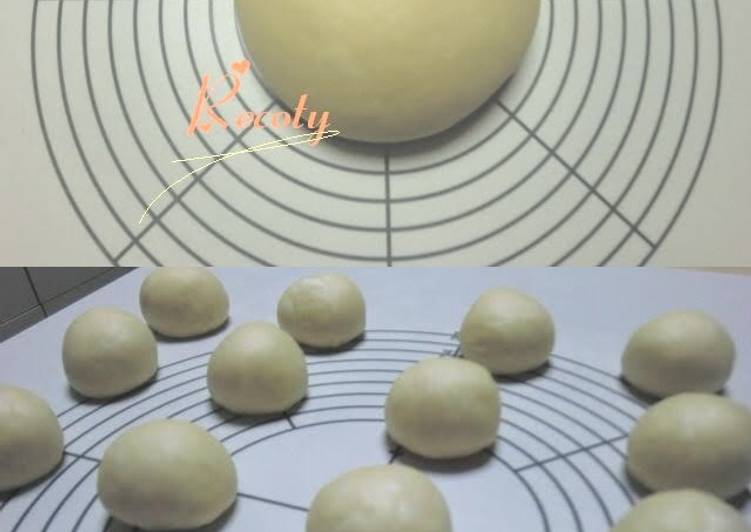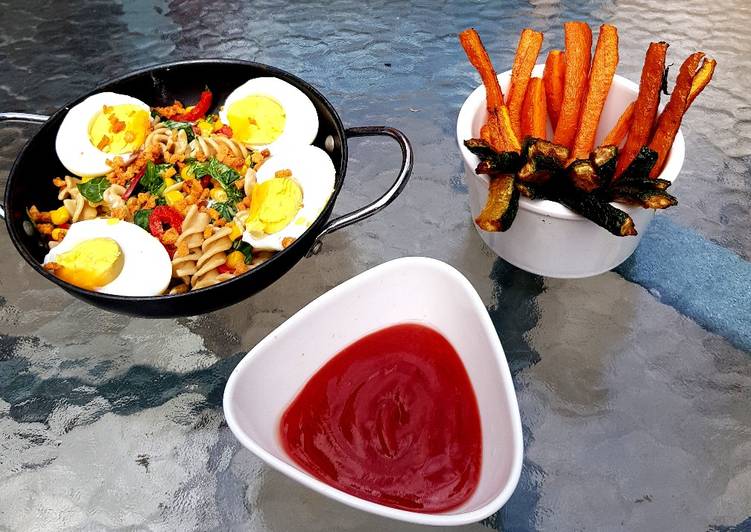
Hey everyone, it’s me, Dave, welcome to my recipe page. Today, we’re going to make a special dish, hand kneaded and very useful standard bread. One of my favorites food recipes. For mine, I will make it a bit tasty. This will be really delicious.
Hand Kneaded and Very Useful Standard Bread I'm a generally lazy person ; so I wanted to have a single recipe for both sweet and savory breads. I can't use this recipe for breads with a hard crust, loaf bread, or any bread that has something kneaded into it, but this dough works for everything else. Great recipe for Mini Anpan with Hand-Kneaded Classic Bread Dough.
Hand Kneaded and Very Useful Standard Bread is one of the most well liked of recent trending foods on earth. It is simple, it’s quick, it tastes delicious. It is enjoyed by millions daily. They are fine and they look fantastic. Hand Kneaded and Very Useful Standard Bread is something which I have loved my whole life.
To begin with this particular recipe, we have to prepare a few components. You can cook hand kneaded and very useful standard bread using 10 ingredients and 29 steps. Here is how you cook it.
The ingredients needed to make Hand Kneaded and Very Useful Standard Bread:
- Get 300 grams ●Bread flour
- Prepare 10 grams ●Skim milk powder
- Make ready 4 grams ●Salt
- Make ready 15 grams ☆Raw sugar (or caster sugar or light brown sugar)
- Get 40 grams ☆Egg
- Prepare 170 grams ☆Water: Use lukewarm water during winter
- Make ready 5 grams ☆Dry yeast
- Make ready 20 grams ◎Butter
- Prepare 1 Egg or milk for eggwash/glaze: Use whichever depending on the type of bread you are making
- Prepare 1 Topping: Depends on the type of bread you are making
I prefer to knead on a worktop. I am physically unable to knead by hand. I use the dough cycle to mix my dough and then remove it to rise in a food grade bucket, then shape and then bake. Before the TFL was online, I tried kneading by hand, many years ago and not disabled and even tried using a KA mixer and my bread came out very dry. (Added way to much flour.) You should get a bread machine if you need to make many loaves or need the extra convenience.
Instructions to make Hand Kneaded and Very Useful Standard Bread:
- Place the ingredients marked with ☆ in a bowl and mix with a whisk.
- Place the ingredients marked with ● in a separate, large bowl and mix well with a dry whisk.
- Using either your hand or a rubber spatula, make a depression in the middle of Step 2, then pour the Step 1 ingredients into it.
- Combine the flour and the liquid by mixing from the middle and outward using either your hands or a rubber spatula.
- Turn out onto a working surface once the dough has more or less come together. Use a dough scraper to get all of the flour that is stuck on the sides of the bowl.
- The dough will still be quite sticky at this point, but that is okay. Knead the dough onto the surface, then combine again with a dough scraper; do this several times.
- If you repeat Step 6 several times, the dough will become easier to handle and will stick less to the surface.
- Grab an edge of the dough and slam it onto the surface.
- Once you slam the dough, fold it over, and…
- Hold an edge of the dough, rotate it 90 degrees so that it faces the same direction as in Step 8, and slam again. Repeat several times.
- When the dough is no longer sticky, fold it toward you, stretching out the surface of the dough, and…
- Push down with the heel of your palm. Repeat for about 10 minutes, occasionally using the motions from Steps 8~10.
- Once the dough has become glossy, cut a part of it with a dough scraper and stretch it out carefully. You will be able to see your fingers through the dough without it tearing if gluten has formed.
- Once the gluten has formed, spread the dough out. Place room-temperature butter in the middle, and wrap the dough around it.
- Combine the butter with the dough with a tearing motion. The dough will come apart, but it will come back together soon since gluten has been formed (Step 13).
- Repeat Steps 8~12 for about 10 more minutes until the surface is springy and shiny. Form into a ball by stretching the surface of the dough and pinching it at the bottom.
- Place the dough ball in a greased bowl and let it rise. If your oven has a proofing setting, then put it in there at 30℃ for about 45 minutes. You could also cover the bowl with plastic and leave it at a warm place.
- It has doubled in size. The time is just a guideline, so you should check the dough to see if it is done. Put some flour on your finger and poke a hole in the dough. If the dough does not spring back, then it is ready.
- Once the dough has risen, turn out onto a working surface and punch out the gas by pushing down the whole thing. You could put extra flour on it if it is sticky, but I almost never do.
- Divide into portions depending on your liking and the type of bread you are making.
- Form the divided portions into a ball by folding it in on itself, then let them rest for 10~15 minutes. Leave them at room temperature, but cover with plastic wrap or damp cloth to keep them from drying.
- After resting the dough, shape them into the shape you like. Then let the dough rise again, in the same way as the first time for 35~45 minutes. It will become 1.5~2x the original size.
- Let the shaped dough rise on the baking sheet with which you will be baking. When they have risen…
- If you like, brush on the egg wash to add gloss and color to the bread. In which case, the egg left over from the dough making process should be more than enough.
- Bake in an oven oven that has been preheated to 200℃ for about 12 minutes. Please adjust oven temperature and baking time depending on your oven and the shape of your bread.
- The amount of liquid that is needed depends on the type of flour you use as well as the temperature and season. Until you get used to it, it would be good to leave out 1 tablespoonful of water in the beginning to see if you need it when you start kneading.
- I used the Haruyutaka brand and the Golden Yacht brand flours this time at a 1:1 ratio.
- Even if you are using a bread maker, wait until the gluten has formed before you add the butter. I really like to knead by hand.
- Little Anpan Made with Standard Bread - - https://cookpad.com/us/recipes/144812-mini-anpan-with-hand-kneaded-classic-bread-dough
Maybe you are tired of making bread by hand and have a busy schedule or have a physical disability. It could very well be a budget issue or you are just new to bread baking. Any of these reasons will make you a perfect candidate for a bread machine. Kneading bread dough can be one of the most enjoyable steps of bread baking, but the idea of it can intimidate some novice bakers. Once you understand the simple steps, however, you will see how basic the process is and won't shy away from recipes calling for kneading.
So that is going to wrap this up with this exceptional food hand kneaded and very useful standard bread recipe. Thank you very much for your time. I’m sure that you can make this at home. There is gonna be interesting food at home recipes coming up. Don’t forget to save this page on your browser, and share it to your loved ones, colleague and friends. Thanks again for reading. Go on get cooking!

